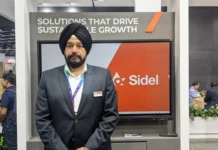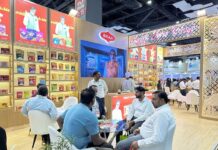Metal packaging holds tremendous potential as a sustainable packaging solution, according to NC Saha, former director of the Indian Institute of Packaging. To fully leverage its potential, all stakeholders in the industry must come together, address certain issues, and actively promote metal packaging, Saha said at a seminar organized by the Metal Container Manufacturers’ Association (MCMA) in Mumbai on 7 June.
One of the key points emphasized by Saha is addressing the issue of thickness in metal packaging. He says the industry should focus on developing metal plates with lower tin coating and reduced thickness. By doing so, the industry can enhance the efficiency and sustainability of metal packaging.
“I believe metal packaging is one of the best forms of packaging provided we take care of some issues such as thickness. The industry should work on developing lower thickness metal plates with lower tin coating,” Saha said.
Saha highlighted the need for aggressive promotion and marketing to showcase the benefits offered by metal packaging. “The industry faces stiff competition from the plastic packaging sector, which is constantly innovating and researching,” he said. Saha believes that the metal packaging industry has a limited time frame to respond effectively and stay competitive.
Recyclability biggest advantage of metal packaging
One of the significant advantages of metal packaging is its recyclability. As the world seeks alternatives to single-use plastic packaging, metal has emerged as a promising option. Metal containers can be fully recycled, reducing waste and environmental impact. In addition, metal packaging offers high levels of hygiene, which have become increasingly important in the wake of the Covid-19 pandemic.
The inherent properties of metal, such as its ability to provide a 100% barrier to moisture, oxygen gases, and light, make it an attractive choice. Furthermore, metal packaging allows for excellent printability, enabling eye-catching designs and branding opportunities.
Saha, however, emphasizes that metal packaging is not without its challenges. The industry must address these challenges to fully exploit the potential of metal packaging. One crucial aspect is the reduction of tin coating thickness without compromising the quality of the packaging. “This improvement would be a game-changer for the industry,” he argued.
Saha identifies several other areas that require attention. Research and development (R&D) and innovation are essential to drive progress in metal packaging. Upgrading conversion technologies can enhance production efficiency and output. Design innovation plays a crucial role in attracting consumers and meeting their evolving needs.
Quality control measures must be strengthened to ensure compatibility between products and packaging. Implementing efficient collection mechanisms and establishing better testing facilities are also key focus areas for the industry.
By addressing these challenges and collaborating effectively, the metal packaging industry can unlock its full potential as a sustainable packaging solution. With its recyclability, durability, and superior barrier properties, metal packaging offers a compelling alternative to plastic packaging. It is up to industry stakeholders to actively work together to innovate, improve, and promote metal packaging, ensuring its continued relevance and success in a rapidly evolving market.
IndiFoodBev — authentic, impactful and influential
An English-language food and beverage processing and packaging industry B2B platform in print and web, IndiFoodBev is in its third year of publication. It is said that the Indian food and beverage industries represent approximately US$ 900 billion in revenues which implies more than 20% of the country’s GDP. Eliminating the wastage on the farmside can help to deliver more protein to a higher number of the population apart from generating sizable exports. The savings in soil, seeds, water, fertilizer, energy and ultimately food and nutrition could be the most immense contribution that country is poised to make to the moderation of climate change.
To improve your marketing and grow sales to the food and beverage processing and packaging industry, talk to us. Our research and consulting company IppStar [www.ippstar.org] can assess your potential and addressable markets in light of the competition. We can discuss marketing, communication, and sales strategies for market entry and growth.
Suppliers and service providers with a strategy and budget for targeted marketing can discuss using our hybrid print, web, video, and social media channels to create brand recognition linked to market relevance. Our technical writers are ready to meet you and your customers for content.
The second largest producer of fruit and vegetables in the world is continuously expanding processing capacities and delivery systems with appropriate innovative technologies. We cover product and consumer trends, nutrition, processing, research, equipment and packaging from farm to thali. Get our 2025 media kit and recalibrate your role in this dynamic market. Enhance your visibility and relevance to existing markets and turn potential customers into conversations. Ask for a sample copy of our bi-monthly in print or our weekly IndiFoodBev eZine each Wednesday.
For editorial info@ippgroup.in — for advertisement ads1@ippgroup.in and for subscriptions subscription@ippgroup.in
Naresh Khanna – 10 February 2025
Subscribe Now











